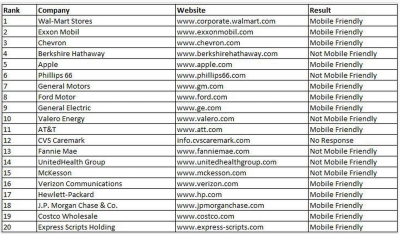
Google’s mobile algorithm update: four days in
Google’s mobile algorithm update was launched on the 21st April 2015 and, in my opinion, represents one of the most significant updates to hit the SEO community.
Clients and digital marketeers alike were up in arms about the potential ramifications of having a partially optimised site or “just” having a mobile site rather than a fully responsive site.
As the dust begins to settle, however, what has the first working week brought in terms of consequences for advertisers?
From my immediate point of view, very little has changed—but that’s because I work in search engine marketing, so my clients were well informed of any changes and took appropriate action well ahead of D-day. A lot of my friends work in SEO, so their own business interests have been protected from the start, too.
On a wider level, as the algorithm update was rolled out, an alarming 40% of the top FTSE500 businesses did not meet the mobile-optimised test. Here’s a snapshot of the first 20:

The rollout was always going to permeate Google data centres, which is why there is little of concrete “mobilegeddon” fails or successes to report—yet. This morning, however, Google’s Head of Web Spam, John Mueller, confirmed that the rollout is now effective in some of the many Google data centres.
On go-live day, there was also a story surfacing of Next PLC losing significant visibility because somebody had forgotten to make their mobile site indexable in the search engine results pages (SERPs).
This is literally a “flick of the switch error”, but all very easy to overlook in the hysteria of launching a new website platform.
Which leads me onto my next point: rather than beating yourself up with should, would and could, I think that you should simply see “mobilegeddon” as an opportunity, rather than a disaster.
I’d suggest that every site will benefit from an optimised mobile experience, if not by directly driving up sales, then by improving click-through rate (CTR) at the first point of contact.
In this sense, Google’s mobile friendly update serves to underscore the importance of user experience.
Happy online customers purchase more often, call you more readily and speak about you more positively on social media.
Want more information? Contact us here
